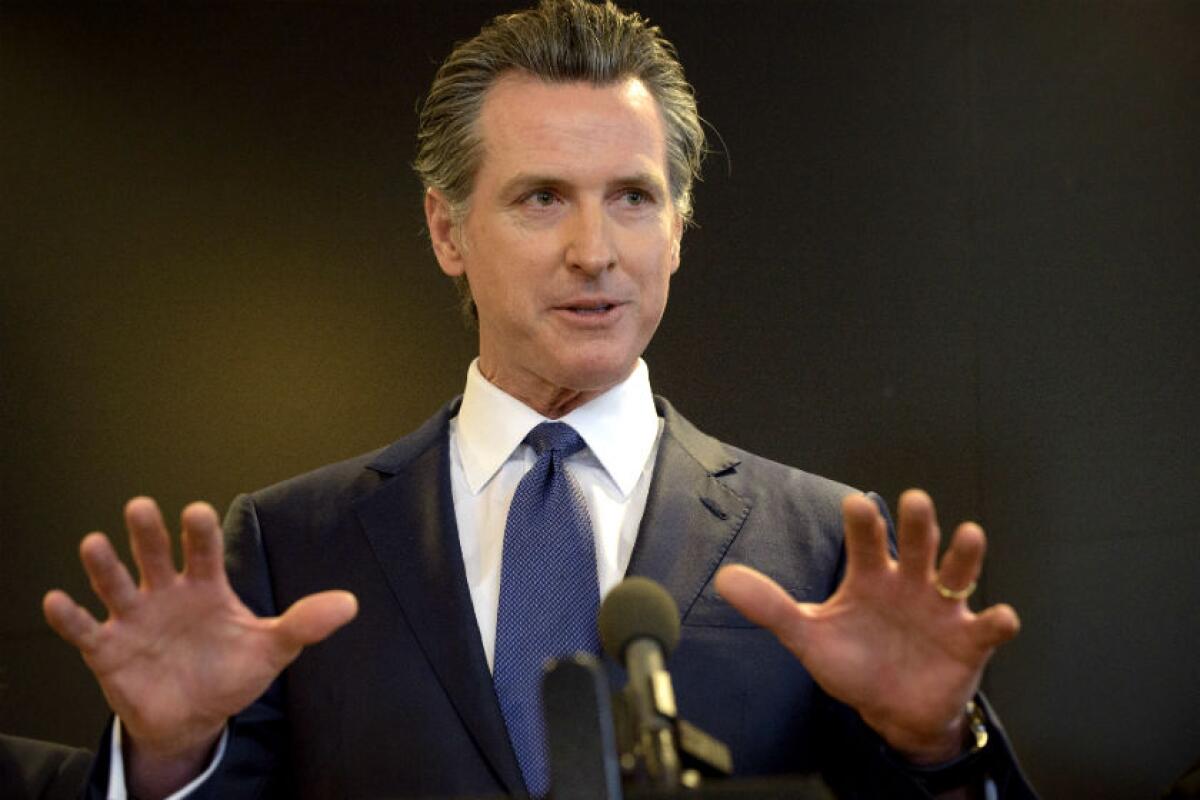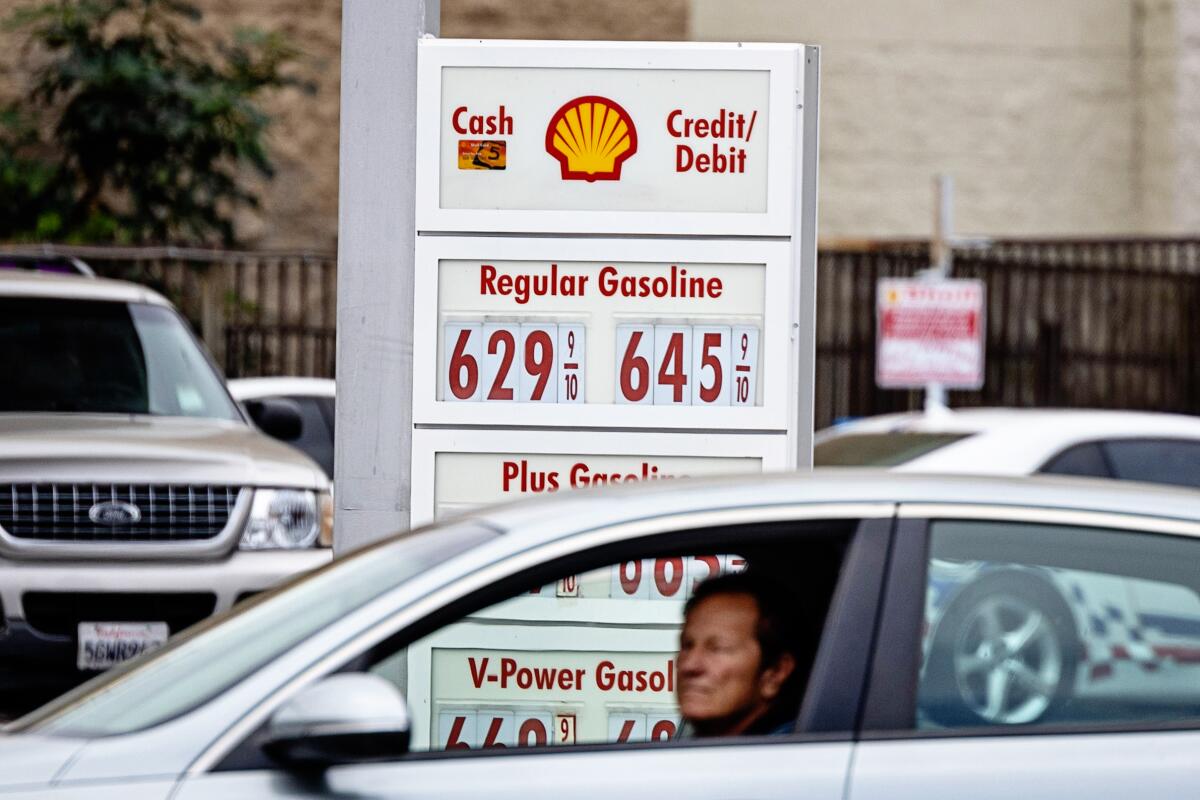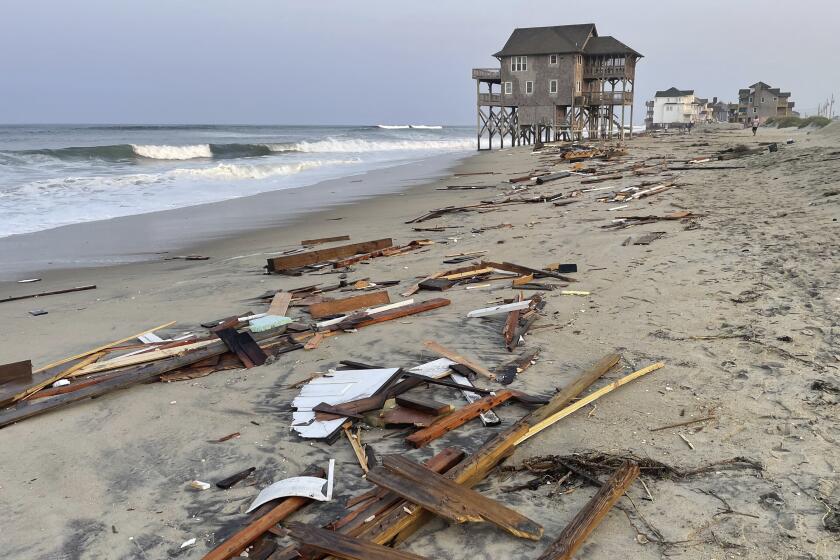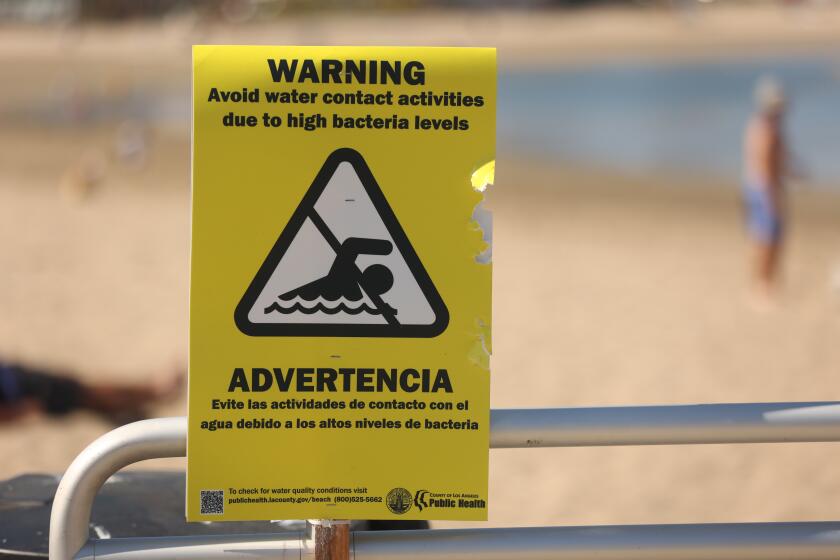Gavin Newsom wants to regulate the state’s supply of gasoline, and pronto. Why?

Hi, I’m Russ Mitchell, a staff writer on The Times’ climate team, filling in for my colleague Sammy Roth.
The best way to wean the economy off burning carbon for energy is to put a tax on carbon. That’s a widespread notion shared by top economists, Nobel Prize winners among them. The logic is simple: If something costs more, people and businesses will use less of it and seek alternatives, including not using it at all.
Few economists become politicians, though. Politicians see support of carbon taxes as a good way to get unelected — or never win office in the first place. Americans love their cheap gasoline.
In fact, even climate-concerned, carbon-reduction evangelists are often among the loudest shouters when gasoline prices rise. The poster child of price hike protest may be Gov. Gavin Newsom, who radiates pride in taking on Big Oil while blaming the industry, and not natural market mechanisms, for the harm done to consumers’ wallets.
So concerned is he that gasoline prices will spike again that he recently called the state Legislature into a special session to craft legislation that would create what would amount to a California strategic gasoline reserve. Thus far unidentified tank-loads of extra gasoline would keep prices from spiking when an oil refinery temporarily shuts down, according to the governor’s plan.
The extra supply would keep prices at the pump from bounding high enough to attract media attention and provoke widespread grumbling throughout the population.
Newsom wants this done, and pronto. “Calling the session now allows the Legislature to begin that work immediately so that the state can resolve this important matter to establish the necessary rules to prevent price spikes next year and beyond,” Newsom said in a recent announcement.

“Next year,” of course, is Newsom’s second to last year as governor before he’s termed out. “Beyond” begins in 2026, his last year in office. Who knows what Newsom has planned for himself beyond that, but unless he plans to return to the restaurant business, a bunch of gasoline price hikes won’t do much to burnish his political reputation in California or in the nation’s 49 other states. And it would provide juicy material for Republican attack ads.
The fact is that California is running out of refineries. When they’re not closing, they’re being converted into biodiesel factories, taking advantage of the subsidies California and the federal government provide for such better-for-the-environment fuels. The state is down to five major refineries capable of producing L.A. freeway quantities of gasoline. That could leave the state in a tenuous position if something blows up or otherwise fails. If a powerful earthquake strikes, a refinery could be out for months, or years, or forever.
Some key questions concerning a California strategic reserve of gasoline are: How big it would be, where would the stuff be stored, how much would it cost to build, and who would pay for it?
For the record:
7:58 a.m. Sept. 5, 2024A previous version of this post reported that Gov. Gavin Newsom tried to coax the California Legislature to cap gasoline prices. He called for a cap on refiner profits.
The industry may be wondering why it should make big capital investments in a state that, for good reason or not, wants to eventually put it out of business. If the expense falls on the refineries, simple economics says the cost will be passed on to consumers. (Last year, Newsom tried to coax the Legislature to cap refiner profits, but failed.) But if enough’s been stored to prevent price spikes, average prices would still rise, to pay for the reserve.
If the state funds it through taxes, voters will squeal. No politician wants that.
Newsom must work with the Legislature to figure it out, and, as The Times’ ace state Capitol reporter Taryn Luna notes, the politics so far have been messy. The Assembly refused to go along with Newsom’s plan in August, when the Senate was game to pass it. Now the Senate is refusing to return to Sacramento for a special session that the Assembly has agreed to. It takes agreement from both chambers and the governor to make any new laws.
If nothing comes of it, though, the politically savvy Newsom will be in a position to blame price spikes on legislative inaction. He’ll be able to say he tried.
POLITICAL CLIMATE

I’ve lived in California more than 30 years and have come to regard state and local governments with … oh, let’s be nice and say “skepticism.”
I’m listening to a new book by Dan Davies titled “The Unaccountability Machine,” which attempts to explain “why market, institutions and even governments systematically generate outcomes that everyone involved claims not to want.”
Otherwise good people allow themselves to be trapped into impersonal systems that almost guarantee that intended results won’t be delivered. (There are those who manipulate such systems for their own evil ends, of course.) Sometimes good people don’t know how to effectively wrestle with the system, sometimes they don’t even know they’re tied up in red tape, or even if they do, they don’t see any way out.
Consider a small but telling example revealed by Ian James, who covers water for The Times.
“Every year in Sonoma County, steelhead trout and coho salmon return to spawn in creeks along the Russian River that are fed by groundwater,” James writes. “Environmental advocates have long urged the county to adopt measures that would prevent groundwater pumping and well drilling from drying up these streams and damaging vital fish habitat.
“Now, a Sonoma County Superior Court judge has sided with environmental groups, ruling that the county violated state law and failed to meet its obligations to protect so-called public trust resources when officials adopted rules for wells under an amended local ordinance.”
The court’s decision, James writes, underlines a legal requirement that California counties ensure that groundwater pumping isn’t drying up streams and threatening species survival.
Reacting to an earlier lawsuit on the matter, Sonoma County amended its well requirements to, its website says, “create a new regulatory process that considers potential adverse impacts on public trust resources, such as habitat for coho salmon, when approving well permits.” But the changes led to little action, according plaintiffs in the case.
“It was kind of like posting a speed limit on the highway and having no cops enforcing it,” said Don McEnhill, executive director of the nonprofit group Russian Riverkeeper. “When it comes to water, when it’s a ‘trust me’ situation, that’s never been proven to work in California — or anywhere else in the country,” he said.
Here’s the part of the story that I think sums up what California government faces as it tries to get voters on board with its grand plans for the environment. The story quotes Paul Gullixson, a county spokesperson, who defended the county’s formulation of well requirements as “a robust public policy making process with considerable public, scientific, and technical input, that took the public trust doctrine and CEQA compliance seriously.”
A “process” and “input” that take the situation “seriously.” Even if that fulfills legal requirements, it says nothing about getting the job done.
AROUND THE WEST

Hard-core vegetarians are the only people I know who don’t appreciate a nicely marinated salmon, fresh off the grill. And for all I know, some of them do: A vegetarian buddy of mine says he still loves the smell of bacon.
But salmon stocks have been dwindling, harmed by dams, water diversions, water pollution and climate change. But along the Klamath River, there’s good news for salmon and for the Indigenous tribes who’ve long lived there.
Ian James traveled to the California-Oregon border to report that crews have nearly finished removing the last of four dams on the Klamath. The dams were used to generate electricity, but the PacifiCorp utility agreed to remove the aging dams after years of protests by Native activists. The company concluded that removing the dams would be less expensive than trying to bring them up to current environmental standards.
With the river flowing freely, James writes, salmon will be able to pass upstream to access creeks that provide spawning habitat. The tribes are hoping an unimpeded route will invite plenty of salmon back to an old home and reinvigorate fishing traditions.
“This is definitely one of the highlights of my life,” said Yurok Tribe member Brook M. Thompson. “The biggest thing for me, the significance of the dam removal project, is just hope — understanding that change can be made.”
THE ENERGY TRANSITION

Face it, plastic is one of the pillars of the modern economy. It’s everywhere. You’ll have to take a walk in virgin woods to avoid seeing it, if you don’t consider the clothes you’re wearing and the gear you carry.
In many ways, plastic, a petroleum product, is a wonder material — cheap and versatile. On the downside, it lives forever, not just on trash heaps, but, as microplastic particles that settle in our gonads and just about every place else on Earth. Furthermore, it’s a petroleum product. We can’t get fully away from fossil fuels without addressing our addiction to plastic.
Recycling it is tricky. Much of the plastic we dutifully drop in our recycling bins ends up in landfills. Plastics must be separated from other recyclables, and some kinds of plastics must be separated from incompatible kinds. It’s a cumbersome, inefficient, expensive process.
Times state writer Susanne Rust offers “a glimmer of hope” in a story about a new recycling process developed by researchers at UC Berkeley, a method that uses inexpensive catalysts to break the molecular chains of some of the more commonly used plastics so they can be used to make more plastic while using relatively little extra energy at up to 90% efficiency.
The process still needs to prove itself at large scale — but good news if it works, and we need a lot more good news these days.
ONE MORE THING
Because I cover climate-related transportation for The Times, I’m often asked for advice on electric cars. The best-use case for EVs right now, I tell people, is as a second car for driving around town that you can charge at home overnight. Because they’d have another car for long trips, the EV doesn’t need a lot of range, thus doesn’t require a huge battery, so it’s cheaper and better for the planet.
I recently drove a fairly new car that fits the bill well, the small and stylish Fiat 500e. At a base price of $35,000 it’s not exactly cheap. But in 2024, $35,000 for a new vehicle is considered an affordable price. The test car’s range was about 120 miles, plenty for local driving or for most commutes to work. A little thing like this is known globally as a “city car,” but my 18-year-old daughter, a Mini Cooper fan who also loved the 500e, describes it this way:
“I see this in a Wes Anderson film that takes place in the suburbs where everything is very clean and nice and you have that family with a couple kids in elementary school and this is the mom’s car. The dad has a big gold pickup truck because he’s a construction worker and the mom’s a school teacher and she drives this to work every day. That’s how I see this car.”
Sounds about right to me.
This is the latest edition of Boiling Point, a newsletter about climate change and the environment in the American West. Sign up here to get it in your inbox. Or open the newsletter in your web browser here.
For more climate and environment news, follow @Sammy_Roth and @ByIanJames on X.
Toward a more sustainable California
Get Boiling Point, our newsletter exploring climate change, energy and the environment, and become part of the conversation — and the solution.
You may occasionally receive promotional content from the Los Angeles Times.



